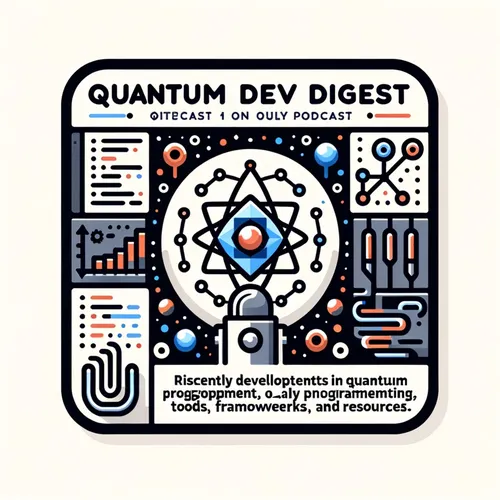Neglectons: The Forgotten Particle Unlocking Universal Quantum Computing
- Author
- Quiet. Please
- Published
- Fri 29 Aug 2025
- Episode Link
- https://www.spreaker.com/episode/neglectons-the-forgotten-particle-unlocking-universal-quantum-computing--67553890
This is your Quantum Dev Digest podcast.
If you stepped into my lab this week, you’d feel the subtle hum of lasers, the whir of vacuum pumps, and—most exciting—the buzz of scientific history being made. I’m Leo, your Learning Enhanced Operator, and today on Quantum Dev Digest, we’re diving straight into a breakthrough that genuinely changed the quantum game—one so recent, the data is still warm: the accidental rediscovery of a “forgotten” particle that could unlock the holy grail of quantum computing.
Last Friday, a team led by Daniel J. Thompson at USC published a result in Nature Communications that has the whole field electrified. For decades, quantum engineers have dreamed of building error-resistant, topological quantum computers by “braiding” special particles called anyons—think of them like magical shoelaces, their twisted paths encoding information. Trouble is, the variety of anyons we’ve been able to realize—especially Ising anyons—don’t let us run every possible quantum program. There’s always been a missing ingredient. That missing piece? Turns out, it was hiding in the mathematical trash.
Enter the “neglecton”: a new type of anyon, previously dismissed by theorists because the math seemed too strange, too unwieldy. But Thompson’s team pulled these overlooked components from the dumpster and found that, when paired with Ising anyons, neglectons make universal quantum computation possible—using only the exotic dance of braiding. Imagine trying to prepare every dish in a restaurant using just fire and water; suddenly someone hands you salt. That’s what adding the neglecton feels like: flavors previously unimaginable are now within reach.
The analogy here, for anyone whose kitchen isn’t a vacuum chamber: think of classic computers as rooms of a house, each one with stable floors and walls. Quantum computers, by contrast, are more like a house with some hidden, creaky, even dangerous rooms. Engineers have always avoided those risky spaces. But what if by walling off the “unstable” parts, you could use a secret room that turns out to be exactly what you needed for that one impossible dinner party? That’s what the USC group achieved—by quarantining the problematic math, all the computation happens in the rock-solid regions.
Why does this matter? Because it’s the first practical blueprint for a universal, hardware-friendly topological quantum computer. This opens routes to error-resilient machines that could form the backbone of secure communications, unbreakable cryptography, and unprecedented simulations of materials and molecules.
As we watch new quantum networks launch in Vietnam and government investment in quantum machine learning soar this week, it’s clear the field’s momentum is greater than ever. Today’s discovery shows that the next revolution may come not from glitzy hardware, but from dusting off forgotten mathematics and seeing the world through quantum eyes.
I’m Leo. If today’s tale of mathematical resurrection left you with burning questions or ideas, just email me at [email protected]. Don’t forget to subscribe to Quantum Dev Digest for your weekly journey through quantum reality. This has been a Quiet Please Production; find out more at quietplease.ai. See you next time, when the next bit of quantum strangeness leaps out of the void.
For more http://www.quietplease.ai
Get the best deals https://amzn.to/3ODvOta
